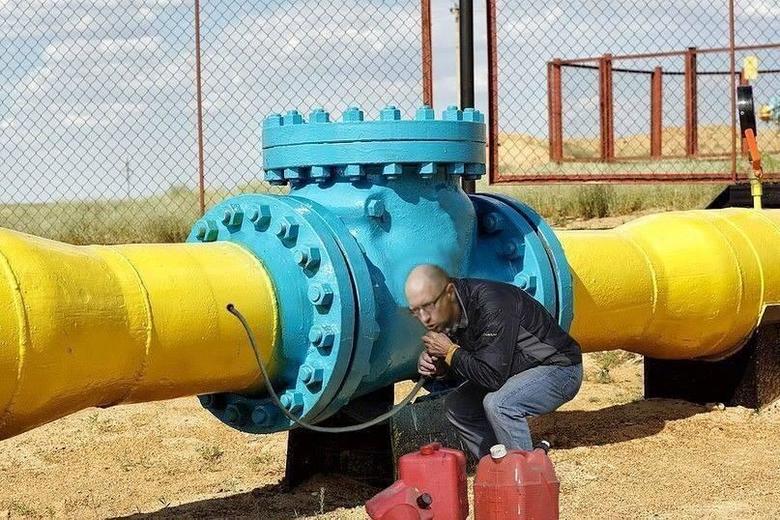
THE BEST RUSSIAN PRICE

According to REUTERS, liquefied natural gas (LNG) from the United States is set to do battle in Europe but Russia's Gazprom is setting the stage, preparing a cold reception for the super-cooled gas set to cross the Atlantic.
A weakened rouble has lowered Gazprom's production costs by a fifth while its profits on dollar-denominated gas sales to Europe last year doubled in rouble terms.
Gazprom has managed to increase sales despite a push by the European Union to curb Russian energy imports, using discounts, renegotiation of unpopular oil-linked contracts and gas sales via auctions.
Spurring Gazprom's charm offensive is a looming showdown as a wave of U.S. gas is set to reach Europe's shores beginning next year.
U.S. exporters led by Cheniere Energy are expected to have 83 billion cubic metres (bcm) of gas ready for sale by 2019. That's about 20 percent of Europe's current annual gas needs.
That threatens to exacerbate already significant global gas oversupply, with new producers squaring up against established players for market share and driving prices lower.
"We are at the start of a new chapter in European gas markets," Fatih Birol, executive director at the International Energy Agency said recently, as U.S. and other supplies fight to gain access.
But Gazprom, for now, appears confident it can see off the challenge and even raise its European market share, which stood at 31 percent in 2015, helped by declining output in Europe, primarily in the Netherlands and Britain.
As U.S. producers crank up exports, more than a dozen LNG cargoes have been exported, yet so far just one has reached Europe as other markets offer better returns.
"Longer term, Asia will remain more attractive for U.S. gas. No U.S. businessman in the right state of mind - being already heavily indebted and having put all his assets as collateral with banks - will deliver gas to Europe at a loss," Gazprom's Deputy Chief Executive Alexander Medvedev told Reuters last week.
LESSON LEARNED?
However, Gazprom has been wrong before.
A few years ago it was similarly sceptical about the threat posed by the rise of U.S. shale gas and oil.
Chief Executive Alexei Miller at the time said unconventional gas was expensive to produce and would not be a game changer in the global energy market.
That was a serious miscalculation and proved costly as Gazprom was forced to shelve development of one of the world's largest gas fields, Shtokman, as shale rapidly wiped out U.S. needs for gas imports.
Russian President Vladimir Putin subsequently urged Gazprom to rethink its long-term export policy to take advantage of rising demand in Asian markets.
But as the company's pivot to Asia drags, Gazprom has looked to bolster demand in Europe through discounting and renegotiating its 25-year, oil-linked supply deals.
After years of tough negotiations, it has reached deals with long-term buyers including France's Engie and Germany's Uniper, a unit of E.ON.
Cheaper oil prices have helped lower Russian gas prices, and that has spurred demand, with Gazprom deliveries to Europe and Turkey up 20 percent in the first quarter.
"Russian gas is low cost and will remain below U.S. gas prices," said Claudio Descalzi, chief executive of Italy's Eni , the biggest buyer of Russian gas in Europe.
And Gazprom seems willing to fight for greater share of the EU market given dwindling sales in former Soviet states and still distant prospects of piping gas to China, according to Poland's Centre for Eastern Studies.
PRICE FOCUS
European gas hub prices stand at around 35 pence/therm currently. A fall to 21 pence would hurt Gazprom's margins but more critically would make it unprofitable for U.S. supplies to cross the Atlantic.
As much as half the production capacity of U.S. LNG players could be shut-in during the summer and at other times if Gazprom simply keeps flowing gas to Europe at current rates, said analyst Stephen O'Rourke at consultancy Wood Mackenzie.
Gazprom has 100 bcm per year of spare production capacity at its disposal, or roughly a quarter of Europe's annual needs, according to the Oxford Institute of Energy Studies.
And like Saudi Arabia has done in oil, Gazprom has shown it can use its market dominance to squeeze its competitors.
After Lithuania opened its Independence LNG import terminal at the end of 2014, for example, Gazprom cut prices to Lithuania and has held an auction for the Baltic states in a bid to boost consumption.
Estonia also took more gas from Russia earlier this year, taking advantage of Gazprom prices that were down by some 45 percent, data from grid operator Elering showed.
"We have such low production costs that we will always be able to cut the selling price by a dollar or two when it comes to fighting off a rival," said a senior source at Gazprom.
Gazprom may win the war but it cannot win every battle.
Ukrainian state energy firm Naftogaz recently said it would likely ignore a Russian offer of gas supplies for next winter citing prices it said were higher than those offered from Europe.
However, an all-out offensive to grab continental market share by lowering prices would have a cost for Gazprom too.
It would not only squeeze Gazprom's own profits but also risk drawing strong political reaction from the European Commission and EU states.
As a result, Gazprom is likely to keep supplies steady at current levels hoping to see off any new wave of U.S. LNG project investment, said Anna Galtsova, associate director at IHS' Russian and Caspian Energy group.
-----
Earlier:




